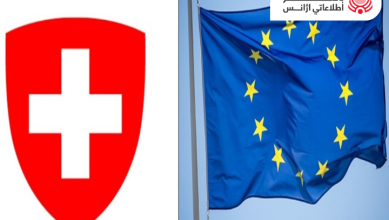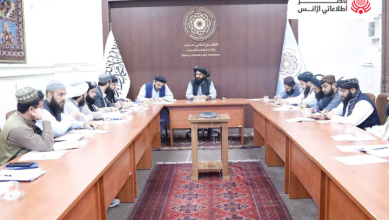
Friday July 5, 2019
Kabul (BNA) In the past five years, Ali Bahib has helped dozens of Afghan poppy farmers make the switch to saffron.
The agricultural engineer and manager of Gharzai Saffron, a company with its production base in Herat, in western Afghanistan, has worked in the business for the past 15 years, but says it is now booming like never before. Both crops are labor intensive, but in a country with hot and dry summers like in Afghanistan, saffron has a clear advantage: it requires little irrigation compared to the water-sucking poppy plants.
And the price saffron fetches can be attractive. Though it takes up to 200,000 flowers to produce a kilogram of saffron strands that amount sells for up to $1,400 locally. By the time saffron is sold to consumers outside Afghanistan, it is often more expensive than gold – retailing for up to $8 per gram. In comparison, an Afghan farmer selling a kilogram of opium might make $100. Afghanistan is renowned for opium production – responsible for 90 per cent of the world's heroin, a business that has partly fueled the decades-long war. But farming saffron – the deep red stigmas from purple crocuses that are used as a spice – has increased rapidly across the country. While Iran dominates the market, producing about 90 per cent of the world's supply, Afghanistan has quickly become the third largest provider after India.
Meanwhile, poppy production is declining. Cultivation dropped from 329,000 hectares in 2017 to 221,000ha in 2018, the United States' Office of National Drug Control Policy reports. Production of opium, which is derived from the sap of poppy seedpods, dropped from 9,140 tons in 2017 to 5,330 tons in 2018. Mr. Bahib, who says that Afghan saffron is some of the world's best when it comes to quality, recognized an opening.
“I saw an opportunity and trained farmers across the province. Sometimes this even meant stepping into Taliban territory, but most people were open to at least learn about saffron,” he says from his office in downtown bustling Herat, sitting behind a polished desk in a white ironed shirt. The company now has about 100ha of saffron farmland across Herat, with an annual revenue between $50,000 and $70,000. “We export worldwide, including to the UAE, Europe and the US,” he says.
Saffron exports are still only a fraction of the illegal opium trade but the cultivation of the red spice is increasing sharply. Five years ago, the country produced about four tons of saffron; last year, according to the agriculture ministry, it was 16. This netted farmer about $17 million, the ministry’s spokesman Akbar Rustami estimates. In comparison, Afghanistan produces 9,000 tons of opium annually, which brings in about $3 billion, the United Nations estimates. Some is purchased legally for producing pharmaceutical products but the majority is sold illegally to be processed into heroin.
Azireh Sediqi, a 40-year-old saffron farmer who set up her business together with her husband Mohamed Ibrahim, 42, says that unlike harvesting opium, saffron is a respectable business. “We invested 2 million Afghani [$25,000] and in the first year, we were able to harvest about 30kg of saffron,” she explains from her farm in Talab village, a rural community of mud houses and farmland a half-hour drive from Herat.
Unlike Azireh, poppy farmers often find themselves in a moral quandary. Drug use is haram, or forbidden in Islam, explains Mohammed Salim, a 60-year-old poppy farmer from Kandahar, a center of opium production.
Afghanistan is overwhelmingly Muslim and often conservative. But the prohibition on drugs often runs up against the imperative to earn a living in an economy that provides few other options to men like Mr. Salim.
“How else would I feed my family?” he asks. Mr. Salim says he has farmed poppies for over 20 years and sees little alternative but admits that business has declined. “Before 2001, a kilogram would sell for at least $500 – even more. Today I’m making no more than $100,” he says.
Following the US invasion in 2001, opium production soared across Afghanistan, with higher supply suppressing the price. Government efforts to clamp down on production have been patchy. A decline in production in recent years has not affected the price much, Mr. Salim says.
He would consider switching to growing saffron, he says, but adds that he would need to receive training and seeds to make it worthwhile. But so far cultivation efforts remain focused on Herat, where 90 per cent of the country’s saffron is produced.
“We’re the country’s leading producer and we eventually hope to replace the entire poppy production,” says Herat governor Abdul Qayum Rahimi.
Saffron seeds were originally imported from Iran but Afghanistan is now producing its own. “In terms of quality, Afghan saffron is the world’s best,” Rahimi says. In Pashtun Zhargun District, where Gharzai Saffron harvests most of its produce, day laborers will start picking saffron this November, earning about 80 Afghani ($1) per kg. An average worker will harvest between two and three kg of flowers per day, Mr. Bahib says. “Many of them used to harvest opium before,” he says. “They prefer working with saffron. It’s clean and it doesn’t harm people.”
Compared to the spring poppy harvest, the autumn saffron harvest does not involve dealing with sticky sap. The harvesting is done in the early morning, before the flowers open to the sun. The workers must wear protective clothing to make sure the stigmas stay as clean as possible. Later the stigmas are separated by hand. It is a labor intensive process, but one that offers Afghans something to aspire to, Mr. Bahib says: “Afghanistan is already the world’s third largest saffron exporter. I hope we will be the leaders one day.”
Thenational




